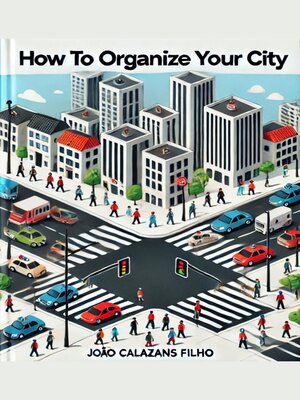
Sign up to save your library
With an OverDrive account, you can save your favorite libraries for at-a-glance information about availability. Find out more about OverDrive accounts.
Find this title in Libby, the library reading app by OverDrive.



Search for a digital library with this title
Title found at these libraries:
| Library Name | Distance |
|---|---|
| Loading... |
Presentation
In modern days it's a struggle to plan cities and states, particularly; the managers start to believe in the organization of cities as a means of good coexistence between those that occupy their spaces, visiting commerce or as the residential nucleus. According to Wikipedia, citing the researcher Monique Felix Borin and Journalist Valdir Sanches - Diary of Commerce in March of Two Thousand Fourteen (03-2014), we learn that the Municipal Code of Stances was an imperial legislation, created and enforced starting from the year of 1886, with the intent of modernizing the city of São Paulo, in order to standardize and homogenize it. The document described and associated several rules regarding the occupation of space, the behavior of the populace and the maintenance of the county.
Before this document, there was the County Standard that was created that same year, except a few months earlier, and afterwards was annexed to the very Municipal Code of Stances, which was considered broader. Among the physical rules of the Municipal Code of Stances, are the norms for the occupation of edifices, roads and avenues, for example the establishment of sidewalks, the size of channels and lanes and the shape of city squares. As for the rules concerning the behavior of residents there are guidelines for coexistence , ones which establish norms about street parties, working hours of commerce and other establishment, as well as the active hours of streetcars and other means of transportation. The document also establishes guidelines regarding sanitary matters.
The Municipal Code of Stances was a very broad legislation, gathering in a single document, various norms related to occupation, the behavior of residents and the maintenance of the city. It weighs on both the physical occupation, determining rules for edifices and roads, as well as the norms of coexistence for the planning of public commemorations, for the continued working of commerce and the transit of streetcars and wagons, besides also containing a series of measures dedicated to sanitary and hygienic matters. In that sense, it's a legislation far broader and more comprehensive than the Law nº 209 which is short and only reinforces clause of article 2 of the Municipal Standard, which already stated that: "Every proprietor is obligated to pave, during a three month period, the front of their houses, as long as the same has been furnished with guides. The material to be used by the owners in said paving will be solely smooth stone, natural or artificial, as long as it possesses the necessary conditions of durability and solidity. The width and slope will be decided by an engineer of the government"
The Municipal Code of Stances established the Municipal Standard which, while in force until nineteen-twenty (1920), when it received a new issue, defined the city's urban dynamics. In its first version the Municipal Standard had six topics, ones which speak of the orientation of constructions, paving of sidewalks, establishment of roads by proprietors, the matter of building and rebuilding, the height of buildings and the dimensions of doors, windows and balconies and lastly of, tenements, worker's houses and cubicles. Thus, they are clauses geared towards the residents of a city in their constructive practices, usually of small size, with more punctual and focused interventions.
In the Code of Stances there are norms for broader constructive interventions, which transpose the limits of the individual property. The establishment of roads by proprietors begins to have a pattern, determined the width of sixteen meters, and defining the square shape...







